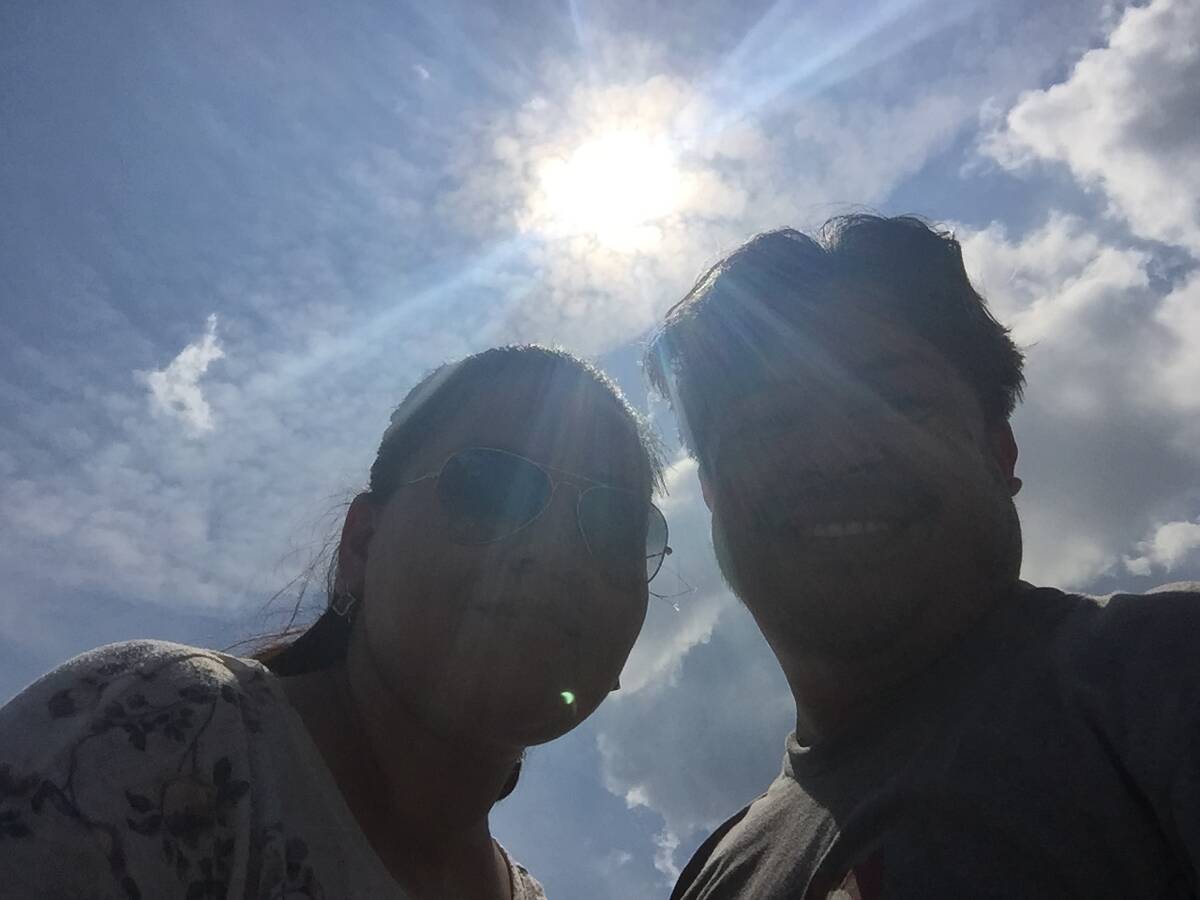2017 Solar Eclipse
The sun in the background is actually undergoing a total eclipse. However, due to the glare of the visible portion of the sun’s corona, the moon is unable to be seen without a camera lens filter. This photo was taken on August 21, 2017, at 1:21 pm on the Crab Orchard National Wildlife Refuge near Carbondale, IL.

What is a total solar eclipse?
A total solar eclipse is a celestial event in which the moon passes between the sun and earth. When this happens the moon’s shadow is visible on Earth at certain points along the globe. Depending on where on Earth you are witnessing the eclipse you may be able to experience different phenomena related to the eclipse. Below is a picture of the phases of the sun as the moon passes in front of the sun.

What is the “Path of Totality”?
The Path of Totality is the path along which you may observe a total solar eclipse from Earth. During a solar eclipse, the Earth, Moon, and Sun are in constant motion. Due to their motion, a path is created along which the total solar eclipse can be viewed. This path is approximately 70 miles wide. This should not be confused with a partial eclipse which can be viewed from a much larger area and during the entire eclipse, not limited to the total eclipse. Below is a picture of the “Path of Totality.”

What Happens During a Solar Eclipse?

During a Solar Eclipse, various things happen. First, as the Moon begins to move in front of the Sun the eclipse is at its beginning stage. As the Moon continues across the Sun, the Sun begins to take on a waning crescent shape. During this time, you may be able to see the sky become eerily darker and shadows become weirdly focused. As the Sun continues to diminish it continues to take on a continually thinning crescent Sun. Along with darkness, you may be able to perceive a cooling effect as a companion effect. Just before totality, if you are in the path of totality, you may be able to see a “diamond ring” effect as the last sliver of the Sun’s surface slithers behind the Moon. **Note: Please use solar viewing lenses from a reliable source when viewing a partial eclipse. Once the Moon reaches a total eclipse, you may look at this event with the naked eye. During a total solar eclipse, the Moon completely covers the Sun leaving the Sun’s corona as a visible, brilliant ring around the dark center.
Looking Down? at the Night Sky
This is a photo taken from the International Space Station as it orbits the North American Midwest Region can be seen in conjunction with the aurora borealis that hovers in the Canadian sky. You may click on the photograph to see a brief time-lapse video of the Midwest at night. This photograph gives the viewer a unique look at the night sky. Looking up at the sky is of particular importance now due to the solar eclipse that is predicted to take place later this summer in August. However, in this article I want to focus on the night sky and in particular at the light that is present in that sky.
If you look closely at the photograph you can observe different types of light. What are their sources? Where do they come from? As it turns out, some sources are natural while others are manmade. You can see the major cities like Omaha, Minneapolis, and of course Chicago with its massive, star-like glow. This illumination is created by people. Whereas, the green-turquoise incandescence above the Canadian horizon owes its brilliance to the magical beauty of the aurora borealis.
Remember, science is about observation. Can you spot the other natural light source in this photograph? I’ll give you a hint: it’s a small white flash of lightning on the east coast of the US. At this distance from Earth, you truly are looking down at the night sky.
Don’t forget to click on the photograph for a brief time-lapse video of the Midwest at night.


